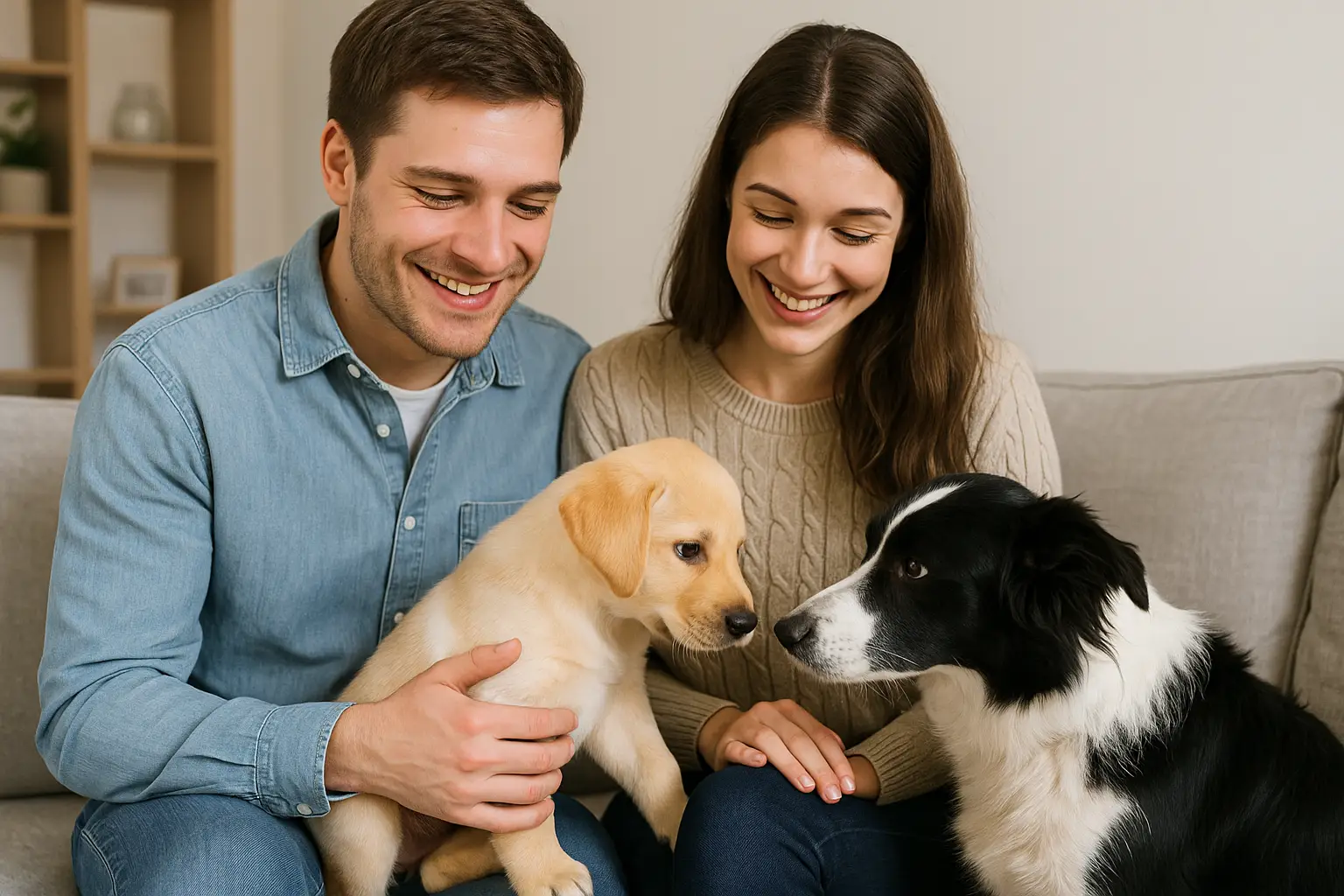
- June 5, 2025
- Dog and Pet IntegrationDog Socialization GuideIntroducing a New DogMulti-Pet Household AdviceNew Puppy Tips
How to Introduce a New Dog to Your Family
1. Take It Slow and Steady
It’s natural for everyone in the household to be eager to meet the new pup. However, a calm and gradual introduction is vital. Introduce each family member one at a time to avoid overwhelming your dog. This allows your new pet to form individual bonds and adjust at their own pace.
2. Let Your Dog Set the Pace
Pay close attention to your dog’s body language. Signs of a confident and curious pup include tail wagging and approaching family members. If your dog appears hesitant or shy, give them space and time. Always let your new pet take the lead in interactions to keep the environment positive and low-stress.
3. Maintain a Calm Atmosphere
Excitement can be misinterpreted as anxiety by dogs. Use soft, reassuring voices and avoid sudden movements. Creating a tranquil environment helps your dog feel safe and encourages a positive start in their new home.
How to Introduce a New Dog to Other Dogs
1. Start on Neutral Territory
Dog-to-dog introductions are best conducted on neutral ground. Choose an open, quiet space like a park or a friend’s yard. Keep both dogs on leashes and maintain a relaxed demeanor.
2. Use Positive Reinforcement
Encourage calm, friendly behavior using treats and praise. Begin by walking the dogs parallel at a comfortable distance. Gradually reduce the distance while monitoring their body language for signs of stress or aggression.
3. Progress Gradually
Allow the dogs to interact briefly and positively, increasing the length of each session over time. Continue supervised interactions until you’re confident both dogs are comfortable around each other. Patience and consistency are key.
How to Introduce a New Dog to a Cat
1. Provide Separate Spaces
Give your new dog and resident cat their own spaces initially. This reduces stress and allows them to adjust to each other’s presence gradually through scent and sound.
2. Use Scent Swapping and Barriers
Exchange bedding or toys between the pets to help them become familiar with each other’s scent. Allow visual introductions using a baby gate or screen to monitor their reactions.
3. Supervise All Interactions
Once they appear calm during barrier interactions, supervise short, direct meetings. Never leave them alone together until you’re certain they are comfortable. Some pet combinations, like Greyhounds with small animals, may require extra caution or professional advice.
Do Dogs Get Jealous of Other Dogs?
1. Understanding Canine Behavior
Dogs may not feel jealousy like humans, but they can show possessive or attention-seeking behaviors when they perceive competition. This can include whining, barking, or guarding resources.
2. Preventing Resource Guarding
To avoid conflict, remove high-value items like favorite toys or bones during early interactions. Consider providing duplicate items for each dog to prevent rivalry.
3. Fostering Healthy Relationships
Spend quality time with each dog individually and offer equal attention. With proper socialization, training, and consistency, dogs can develop strong bonds and coexist peacefully.
Conclusion: Building a Happy, Harmonious Home
Introducing a new dog to your household involves patience, awareness, and proactive care. By taking a gradual approach, encouraging positive behavior, and addressing each pet’s needs, you can create a welcoming environment where all your animals feel loved and secure. Remember, every dog is unique—adjust your approach to suit their temperament and always seek professional guidance if needed.
FAQs:
1- How long does it take for a new dog to adjust to a new home?
Most dogs adjust within a few weeks, but some may take longer depending on their background and personality.
2- What if my existing dog is aggressive toward the new dog?
Use slow introductions, monitor body language, and consult a professional trainer or behaviorist if aggression persists.
3- Can I introduce a new dog to a household with young children?
Yes, with supervision and guidance. Teach children how to interact respectfully and calmly with the new dog.
4- What signs show that my pets are getting along?
Positive signs include relaxed body language, mutual play, shared spaces, and calm behavior during interactions.
5- Is it better to adopt a dog of the opposite sex to my current pet?
While not a strict rule, opposite-sex pairings may reduce territorial behavior. However, compatibility depends more on temperament than gender.